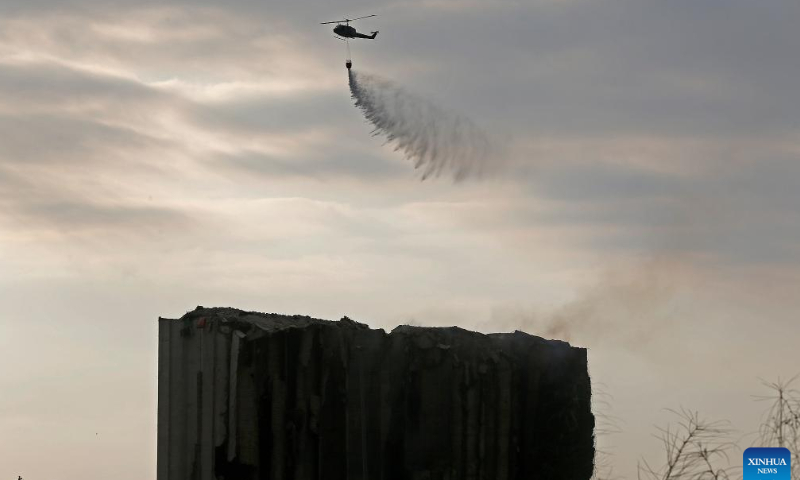Northern part of damaged Beirut grain silos collapses
By Olga_Gafurova Tuesday, 23 August 2022 5:58 PM

The northern section of the grain silos damaged two years ago by a blast at the Beirut port collapsed early on Tuesday after warnings the structure was leaning too far to stay up.
In total eight more grain silos toppled, the third such collapse in a month, Agence France-Presse correspondents reported.
The crash sent a cloud of brown-grey dust billowing over the waterfront, the LBCI television station reported. There were no immediate reports of injuries.
The remaining southern block is more stable and not at imminent risk of collapse, said French civil engineer Emmanuel Durand, who has installed sensors on the silos. The government will now investigate how it can stabilise that remaining part.
A number of caretaker government ministers will meet on Tuesday afternoon to discuss the next measures following the final collapse of the northern silos, which happened at about 7.40am.
Caretaker environment minister Nasser Yassin said the dust had spread out into the sea but urged people near the port to wear masks.
The health ministry has issued medical guidance for those in the vicinity of the port, particularly given the presence of “high levels of Aspergillus-type fungi” in the area, according to air quality samples taken.
While that fungi does not typically pose a health threat, the ministry said “inhaling these materials in large quantities and for a long time could expose people suffering from respiratory or immune diseases to complications which could turn out to be dangerous”.
The fire, which authorities have struggled to put out, accelerated the tilt and collapse of the silos. The blaze has been blamed on fermenting wheat stocks inside the silos and the summer heat. Only 12 of the original 48 silos remain standing.
For survivors and families of the victims, the fire has compounded the grief and trauma from the 2020 blast that injured thousands and destroyed large parts of the Lebanese capital.
Late last month, the first part of the northern block collapsed and days later — on the second anniversary of the explosion – more of the silos fell.
With the northern half now flattened, it is hoped firefighters and the military can get closer to the silos and extinguish the blaze. They had been unable to do so because of the dangers associated with the expected collapse of the northern section.
Mr Yassin said the rubble and debris could now be removed and that the southern block was stable “for now”.
The Lebanese government last week approved a plan that would demolish what was left of the northern part of Beirut’s collapsing wheat silos and reinforce the southern section.
Mr Yassin said by demolishing the northern silos, the rubble and grain could be cleared away, thus removing the source of the fire and preventing pollutants from being emitted into nearby neighbourhoods.




























Add new comment